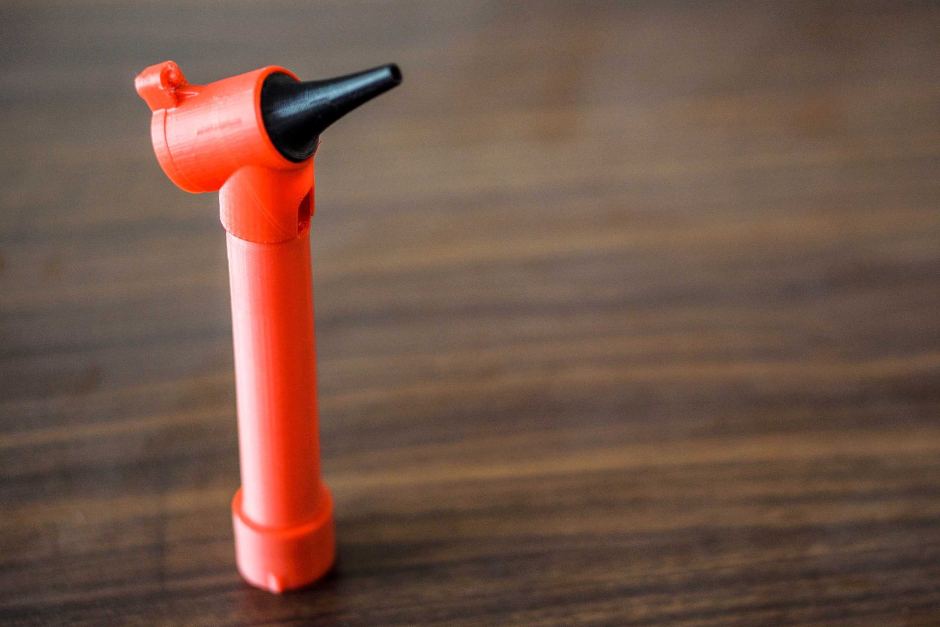U.S. non-profit, Field Ready, is using 3D printing to resolve some of the lasting affects of the 2015 Nepal earthquake.
The work done by Field Ready found that 3D printers are a useful tool for remote areas like the mountainous Nepal district of Sindhupalchowk. In particular applications such as creating vital objects like medical supplies which are both expensive and hard to acquire.
Field Ready’s Ram Chandra Thapa spoke to news service ABC Australia about how 3D printing can be used to improve healthcare in the small village of Bhotechaur.
The Nepal Earthquake
The April 2015 earthquake killed almost 9,000 people and left many homeless. In the small village of Bhotechaur, 35 people were killed as a result. The effects are still felt today with lasting damage to both people’s lives and also the country’s infrastructure.

Creating an Otoscope
The remote area of Nepal where Field Ready work has terrible road infrastructure and a serious lack of financial resources. Explaining the difficulties this causes Thapa says,
Just even to get a small tweezer, or a fetoscope, or an otoscope, [the clinics] had to wait for two to three months to go through the regular process.
To address such logistical problems Field Ready created an otoscope using a 3D printer. The device is plastic and features a small light similar to common otoscopes used elsewhere in the world to diagnose ear infections. Ram Chandra Thapa explained the importance of this new method, “The items that we develop using 3D printers are cheaper, and they can be made in the field.”
Its not just otoscopes that were 3D printed, Thapa said they are also working on a number of other designs, such as tweezers, forceps and stethoscopes. All these devices, because they are 3D printed, are cheaper to produce and can be created rapidly on-site. Field Ready has uploaded some of these designs to thingiverse.

Using 3D printing in remote areas
There are an increasing number of organizations using 3D printing to make medical supplies. For example, ReFab Dar is using 3D printing to improve the medical supply chain in Tanzania. The ReFab Dar project also addresses the waste problem in the country and will use recycled filament to create medical instruments.
Another useful application of 3D printing in remote areas is in farming. In the South Asian country of Myanmar, non-profit enterprise Proximity Designs is 3D printing farming equipment. Creations include parts for sprinkler systems and water pumps.
In the future, Field Ready’s Ram Chandra Thapa hopes 3D printers will be installed in the remote health clinics of the Sindhupalchowk district. That way, doctors and nurses could 3D print supplies on demand.
Sign up to our newsletter for the latest on how 3D printing is finding applications across the world and follow us on twitter and Facebook. Also, let us know what you think about this project in the comments below.
Featured image shows the region of Sindhupalchowk in Nepal. Photo via ECS Nepal.


